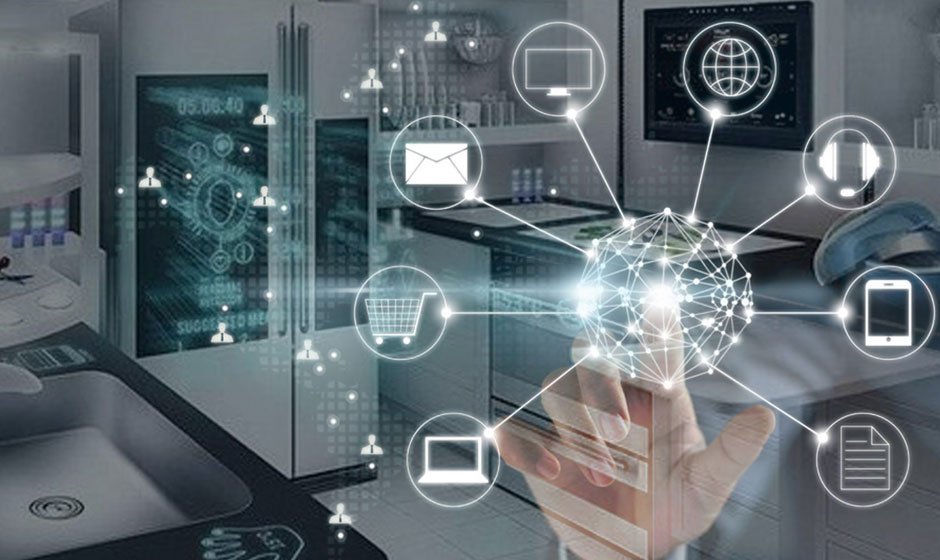A Closer Look at the Future of Home Automation

The rapid advancement of technology has revolutionized various aspects of our lives, including the way we interact with our homes. Home automation, also known as smart home technology, has gained significant popularity in recent years. With the ability to control and automate various systems and devices within a house, home automation provides convenience, comfort, and increased security. In this article, we will delve into the future of home automation, exploring its benefits, components, integration with the Internet of Things (IoT), technological advances, and its potential impact on sustainable living.See more here home automation palm beach fl
Benefits of Home Automation
Home automation offers numerous benefits that enhance the quality of life for homeowners. One of the primary advantages is convenience and comfort. With a smart home system, you can control various aspects of your home remotely or through voice commands. Imagine adjusting the temperature, turning on the lights, or locking the doors without leaving your couch or while being away from home.
Another significant advantage is energy efficiency. Smart thermostats can learn your preferences and adjust the temperature accordingly, resulting in energy savings and reduced utility bills. Lighting automation allows you to schedule lights to turn on and off, optimizing energy usage. Furthermore, integrating appliances and systems with a home automation hub enables better management of energy consumption.
Enhanced security is another key benefit. Home automation systems include features like surveillance cameras, smart locks, and motion sensors, providing homeowners with real-time monitoring and the ability to control access to their property. These systems can also send alerts to your smartphone in case of any unusual activities, ensuring peace of mind even when you’re away.
Lastly, implementing a home automation system can increase the value of your property. Prospective buyers are increasingly interested in smart homes that offer modern conveniences and advanced security features. Therefore, investing in home automation can make your property more appealing and potentially fetch a higher price if you decide to sell in the future.
Components of Home Automation Systems
Home automation systems consist of several key components that work together to create a seamless and automated experience. These components include:
- Smart hubs and controllers: These devices serve as the central control unit for the home automation system. They connect and communicate with various smart devices, allowing you to manage and automate different functions.
- Sensors and detectors: These devices detect changes in the environment and trigger automated actions. For example, motion sensors can activate lights when someone enters a room, or smoke detectors can automatically notify you and emergency services in case of a fire.
- Smart thermostats: These devices enable precise control of your home’s heating and cooling systems. They can learn your temperature preferences, adjust settings based on occupancy, and even optimize energy usage based on external factors like weather conditions.
- Lighting automation: With smart lighting, you can control and automate the lighting in your home. This includes features such as scheduling lights to turn on and off, adjusting brightness and color, and integrating with other devices for coordinated actions.
- Security systems: Home automation systems offer advanced security features, including surveillance cameras, smart locks, and door/window sensors. These components provide enhanced security and allow you to monitor and control access to your home remotely.
- Entertainment and multimedia integration: Home automation can extend to your entertainment systems, enabling seamless integration with audio and video devices. You can control your home theater, music streaming, and even synchronize audio throughout your home.
Integration with Internet of Things (IoT)
The future of home automation lies in its integration with the Internet of Things (IoT). The IoT refers to the interconnectivity of devices and objects, allowing them to communicate and share data. By integrating smart devices and appliances with the IoT, home automation systems can offer even greater functionality and convenience.
With IoT integration, you can control your home automation system through smartphones, tablets, or voice assistants. Imagine being able to adjust the thermostat, turn on the lights, or even start the coffee maker with a simple voice command or a tap on your phone. This level of interconnectivity and accessibility makes home automation systems highly user-friendly and convenient.
Furthermore, IoT integration enables data sharing and analysis, leading to personalized experiences. For instance, your home automation system can learn your preferences and habits over time, adjusting settings and automating actions to suit your needs. This level of customization enhances the overall user experience and makes your home truly smart and intuitive.
Advances in Home Automation Technology
Advancements in technology continue to drive the evolution of home automation systems. Some notable advancements include:
- Artificial Intelligence (AI) and Machine Learning (ML): AI and ML technologies are increasingly being incorporated into home automation systems. These technologies enable devices to learn from user behavior, adapt to preferences, and make intelligent decisions. For example, a smart thermostat can analyze temperature patterns and adjust settings automatically based on user habits and external factors.
- Voice recognition and natural language processing: Voice assistants such as Amazon Alexa and Google Assistant have become commonplace in many households. Home automation systems leverage voice recognition and natural language processing technologies, allowing users to control various devices and systems using voice commands.
- Predictive analytics and smart algorithms: Home automation systems can analyze data from various sensors and devices to provide predictive insights. For example, based on occupancy patterns and weather forecasts, the system can optimize energy usage, adjust lighting conditions, and even suggest security measures.
These advancements not only enhance the capabilities of home automation systems but also contribute to their overall intelligence and adaptability.
Home Automation and Sustainable Living
Home automation plays a significant role in promoting sustainable living and energy conservation. By integrating smart devices and systems, homeowners can achieve greater energy efficiency and reduce their carbon footprint. Here are some ways in which home automation contributes to sustainable living:
- Energy management and conservation: Smart thermostats, lighting automation, and energy monitoring systems help homeowners optimize energy consumption. For example, smart thermostats can adjust temperature settings based on occupancy patterns and external conditions, leading to significant energy savings. Lighting automation allows for efficient use of lighting resources by automatically turning off lights in unoccupied rooms.
- Smart grid integration: Home automation systems can connect to the smart grid, enabling communication between the power grid and individual homes. This integration allows homeowners to take advantage of time-of-use pricing, where energy costs vary throughout the day. By scheduling energy-intensive tasks during off-peak hours, homeowners can save money and contribute to a more balanced and efficient energy grid.
- Reduced carbon footprint: By optimizing energy usage and promoting energy-efficient practices, home automation helps reduce greenhouse gas emissions. The ability to monitor and control energy-consuming devices allows homeowners to make informed decisions about their energy usage, ultimately leading to a greener and more sustainable lifestyle.
Challenges and Concerns
While home automation offers numerous benefits, there are also challenges and concerns that need to be addressed:
- Data privacy and security risks: As home automation systems rely on data sharing and connectivity, there is an increased risk of data breaches and unauthorized access. It is crucial for homeowners to choose reputable and secure systems, implement strong passwords, and regularly update firmware to mitigate these risks.
- Compatibility and interoperability issues: With a wide range of smart devices available in the market, compatibility and interoperability can be a challenge. Homeowners need to ensure that their chosen devices and systems work seamlessly together to avoid any integration issues.
- Cost considerations and affordability: While home automation technology has become more accessible in recent years, there are still costs involved in purchasing and installing the necessary devices and systems. Homeowners should carefully consider their budget and prioritize the features that align with their needs and preferences.
Future Trends in Home Automation
The future of home automation looks promising, with several exciting trends on the horizon:
- Expansion of voice-controlled devices: Voice assistants have already made their way into many homes, and their integration with home automation systems will continue to expand. Voice commands will become even more intuitive and natural, allowing homeowners to interact with their smart devices effortlessly.
- Integration with virtual reality and augmented reality: As virtual reality (VR) and augmented reality (AR) technologies advance, they will likely be integrated with home automation systems. This integration could enable immersive experiences within the home, such as virtual tours, interactive simulations, and enhanced control interfaces.
- Enhanced customization and personalization: Home automation systems will become more intelligent and adaptable, learning from user preferences and habits to provide personalized experiences. Customizable automation scenarios and predictive analytics will further enhance the user’s control and convenience.
Conclusion
In conclusion, the future of home automation holds tremendous potential. From convenience and energy efficiency to enhanced security and sustainability, home automation offers a range of benefits for homeowners. With advancements in technology and the integration of the Internet of Things, we can expect even smarter and more intuitive home automation systems. As we move forward, it’s important to address challenges such as data privacy and compatibility while embracing the exciting trends that lie ahead.
FAQs
- What is the average cost of installing a home automation system?
The cost of a home automation system can vary depending on the size of the property, the complexity of the desired features, and the chosen devices and technologies. On average, homeowners can expect to invest several thousand dollars for a basic system, while more advanced systems with extensive integration can cost tens of thousands of dollars.
- Are home automation systems difficult to set up and use?
While some technical knowledge may be required during the installation process, many home automation systems are designed to be user-friendly. Manufacturers often provide step-by-step instructions, and smartphone apps offer intuitive interfaces for controlling and managing the system.
- Can home automation improve energy efficiency in older homes?
Yes, home automation can enhance energy efficiency in older homes. Smart thermostats, lighting automation, and energy monitoring systems can be retrofitted to older homes, allowing homeowners to optimize energy usage and reduce utility bills.
- How secure are home automation systems from hacking?
Home automation systems can be vulnerable to hacking if not properly secured. To enhance security, homeowners should choose reputable devices and systems, use strong passwords, regularly update firmware, and ensure their home network is secure.
- Are there any limitations to what can be automated in a home?
While home automation technology has advanced significantly, there may still be limitations depending on the specific devices and systems being used. Some devices may not be compatible with certain automation protocols, and complex automation scenarios may require additional customization or programming. It’s important to research and choose devices that align with your automation goals and preferences.



